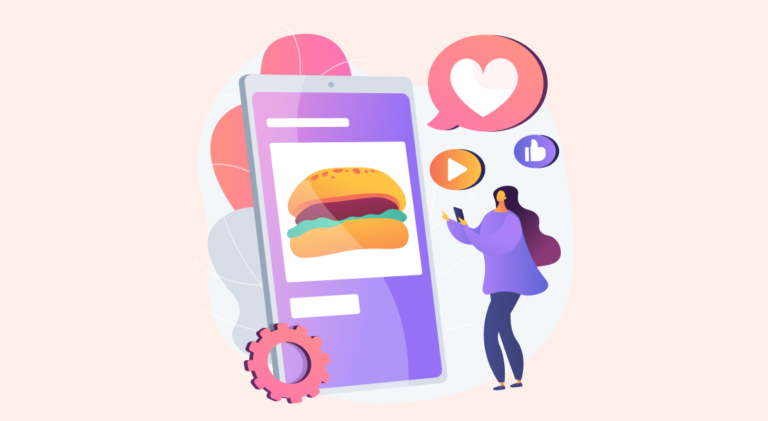
With an increase in digital opportunities, there has been a rise in bloggers too, who are sharing a lot many posts and are trying harder to make unique ones. Many efforts are taken to attract readers’ attention and motivate them to read their posts, with writers continually engaged in creating good blog posts. According to an updated 2021 survey, as many as 409 million people view more than 20 billion blog pages, and brand or personal websites that also have a blog have 434% more indexed pages.
Good blog posts play a vital role in catching the attention of the targeted audiences. To create quality posts, the writer needs to understand blogs and the correct way to structure them.
Let us begin with some critical information that will help us better understand the world of blogs:
What Are Blogs?
Blogs came into existence in 1994 when they were more like a personal diary for writers who shared their personal information and activities with other people using the online platform.
Gradually, after getting great responses from the readers, the writers succeeded in converting this into an opportunity and started communicating information for personal and business purposes.
Blogs are usually an informational website or an online journal that is usually written in a conversational style. Information shared on it is usually updated and appears in a reverse chronology, with the most recent on the top.
What are Blog Posts?
A blog post is usually a news piece, an article, or a guide published by writers or bloggers on a website in the blogging section or on a separate web page entirely. It mainly covers specific queries or topics and comprises many visual elements such as videos, images, interactive charts, and info-graphics besides text.
The standard word limit of any blog content is 600 to 2000 onwards, depending on the information and covered subject areas.
Today, many companies and individuals engage in blogging to interact with their target audience. The purpose of blog posts is to spread information about a preferred subject.
A blogger’s motives are usually to increase the traffic on the blog site and get discovered by the target audiences while increasing followers.
Blog content posts enable businesses to share product information, publish thoughts, insights, and stories about any related topic on the website. It helps in elevating brand credibility, awareness, and conversions.
Many people engage in blogging activities in every walk of life. They share opinions, views, tasks, likes, and dislikes for the purpose of self-branding.
What is a Perfect Blog Structure?
Writers need to realize that the internet today is flooding with textual information. Bloggers are coming up with new information and ideas. However, more often than not, they fail to get the expected response from audiences.
The fact is, you might be an excellent writer and also know how to make boring information exciting for readers, but how you structure your ideas and thoughts matters the most. It qualifies your blog as readable, shareable, or ignorable.
Blogs with quality content and relevant structure can only retain the interests of the readers. Ideal posts consist of the perfect format that maintains the flow of information and also boosts SEO.
The perfect blog structure has ten elements that should be incorporated while developing blogs:
- Have catchy headlines
The headline appears at the top and plays a substantial role in making your blog attractive. It is the thing that creates the first impression on the audience. And we all know that ‘You never get a second chance to make a first impression’.
As per the founder of Copyblogger Media, Brian Clark, out of ten people, eight read the headings. A magnetic heading boosts the intention of the readers to read the entire content piece.
Also, persuading titles improves SEO besides generating more clicks. Bloggers should strategically choose keywords that can appear in related searches.
- Heed these details
Bloggers who keep posting blogs and updating the previous ones are recommended to publish the date. However, it is not mandatory for evergreen posts.
The name of the author is substantial as it enables the reader to identify who posts the blog. It also improves the recognition of the writers.
Always categorize the post since it helps in grouping the content in distinguished sections. The category tags are crucial for readers and for search engines to include your blog in suggestions.
- Use a captivating landscape image
A landscape image creates a good impression on the readers. It helps them know what the blog post conveys and also communicates the context of the developed blog.
- Come up with an amazing introduction
The first paragraph of the blog is called the introductory passage; it coaxes the reader to either continue reading or leave the page. The introduction is the most significant part of the blog post and should include the relevant keywords. It should be creatively written so that it attracts and also appears in search engines.
Writing an introduction requires bloggers to focus on three elements:
1. Hook: The first one can be a question or a post idea.
The hook grabs the attention of the audience and helps them to move on to the transition.
2. Transition: This can be a sentence connecting the hook with the content body. It clarifies the title.
3. Thesis: The third element is a thesis that summarizes the blog post and provides a reason why the audience should connect to the blog posts’ idea.
- Write engaging content
The content is the main body of the post. It reflects the crux of the blog information and should be highly engaging. Writers should ensure that the words, sentences, and phrases do not repeat and that the content is original.
It should consist of subheads and bulleted or numbered lists, which are effective in keeping the promise made in the post’s heading.
Excellent bloggers include unique information in their blog posts that are specific, precise, convincing, and not too lengthy.
- Have any subheadings
Many readers prefer to scan the headings and subheadings to get a gist of the blog. Thus, blog content should be classified in several subheadings. At least 43% of people skim through blog posts before they actually decide to read them.
Subheadings depend on the information that is presented in the particular paragraphs of the post. It groups the information under heads to make it convenient to understand.
- Add visual elements
Visuals strengthen one’s blog content. Only content is never enough for blog posts; a blogger needs to present relevant visuals too. Humans are said to be the most visual beings. They process the visuals 60000X faster in the brain as compared to content text.
These visuals include infographics, memes, screenshots, images, videos, logos, vector graphics, illustrations, charts, animated gifts, icons, etc., that makes the post engaging and interesting for the readers.
- Include a striking conclusion
Have a paragraph at the end of the post that summarizes the blog you have written. Readers must get a summary of the material you have covered and what is your conclusion.
If the conclusion is not appropriate, the audience will not understand and might go back to the main body of the post to find out what they have missed.
- Definitely include a Call-to-action
Lastly, the blog content needs one or two actionable words or statements providing direction to the audiences about what they should do after reading the content. It boosts sales and conversions.
- Sharing options and comment sections
Lastly, do include social media platform buttons to enable sharing options for the blog and provide space to receive comments from the readers and interact with them.
Final Thoughts
Your blog should be different from the ocean of content flooding the digital platforms right now. It will help if you master blog posting skills that will enable you to stand out and achieve your goals.

Latest Blogs
Learn how to rank on AI search engines like ChatGPT, Perplexity, and Gemini by optimizing your content for authority, structure, and relevance. Stay ahead in AI-driven search with this strategic guide.
Explore the best healthcare SEO services for your medical practice. Improve online visibility and effectively reach more patients in need of your services.
Discover top social media agencies specializing in banking solutions, enhancing financial services and driving engagement.
Get your hands on the latest news!
Similar Posts

Artificial Intelligence
5 mins read
Top AI Blog Writing Tools for Website Monetization

Blogging
10 mins read
How to Start a Successful Food Blog in 2022

Blogging
4 mins read